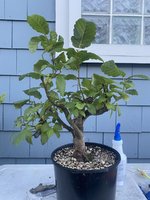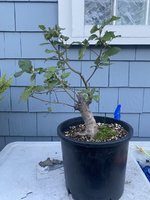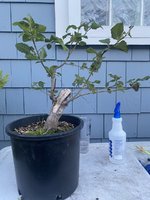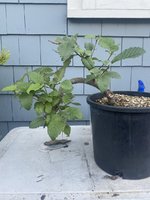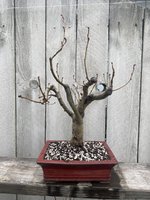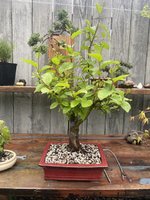Dysfunctional Vet
Mame
This year I decided I was going to step up my tree game and collect some trees from the wild. I got in touch with the Enumclaw office this spring and they issued me a free use permit for 3 hardwood trees. I’m confident with deciduous trees and to be honest worried I’d kill cool conifers so I’m not going there yet.
They have some funky collection rules, trees have to be less than 2 ft tall and they have to be collected within 50 ft of the road. So I figured I’d be collecting baby trees. It’s a good thing they brush hogged the side of the road a couple years ago. Lol
There was long stretches of road with some awesome alders so I collected a few of those. They were easy to dig and had a good root ball. They’ve had their issues since collecting; fungus, tent caterpillars and a little deer defoliation. But they are doing well and I’m excited about the two with fat trunks.
When potting them I tried to match the soil/rocks composition that they were growing in. Next spring I’m going to get into the roots a little more.
I really really really need to start documenting my trees more. I only have one tree pic from when I potted them.

They have some funky collection rules, trees have to be less than 2 ft tall and they have to be collected within 50 ft of the road. So I figured I’d be collecting baby trees. It’s a good thing they brush hogged the side of the road a couple years ago. Lol
There was long stretches of road with some awesome alders so I collected a few of those. They were easy to dig and had a good root ball. They’ve had their issues since collecting; fungus, tent caterpillars and a little deer defoliation. But they are doing well and I’m excited about the two with fat trunks.
When potting them I tried to match the soil/rocks composition that they were growing in. Next spring I’m going to get into the roots a little more.
I really really really need to start documenting my trees more. I only have one tree pic from when I potted them.



